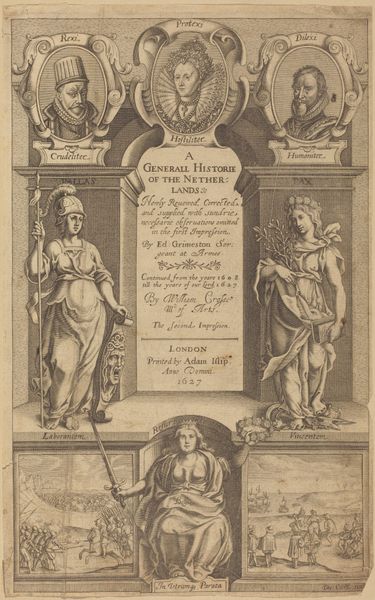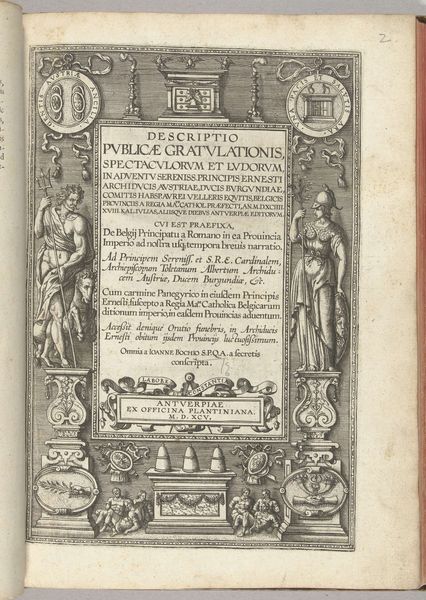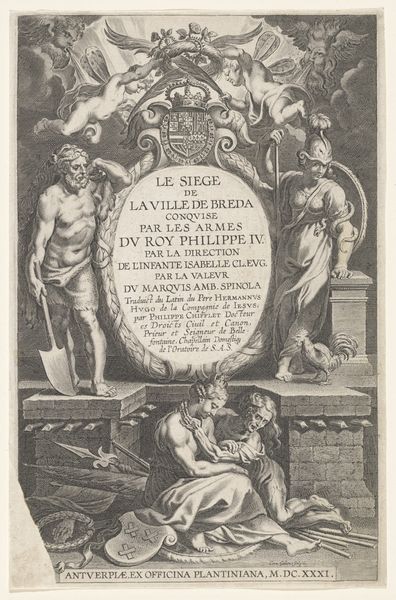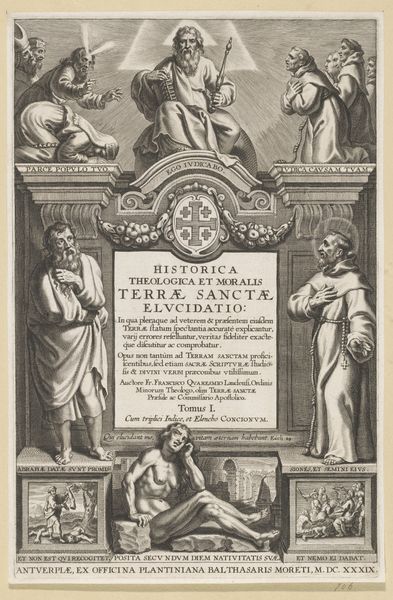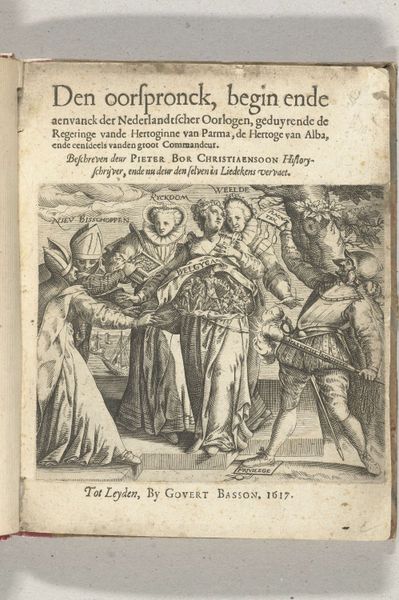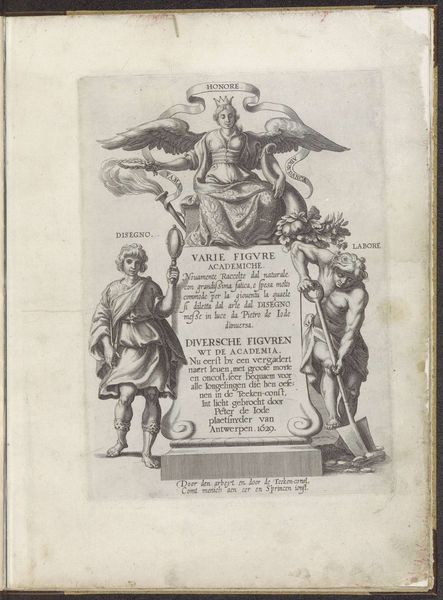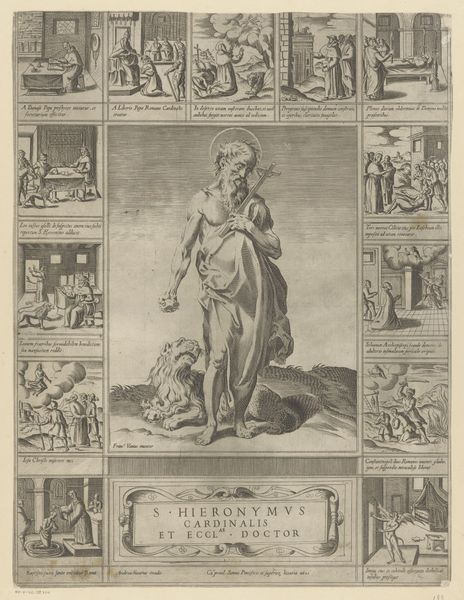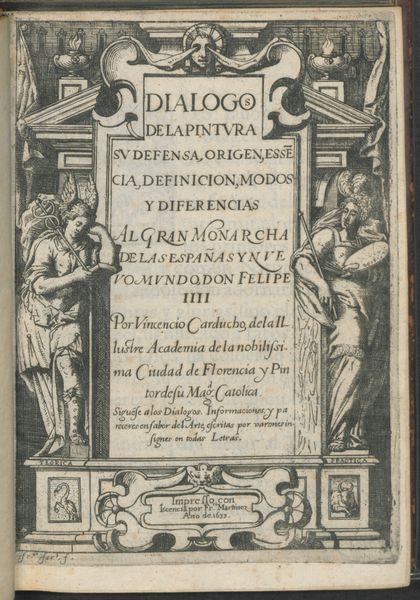
print, engraving
#
narrative-art
#
baroque
# print
#
old engraving style
#
figuration
#
engraving
Dimensions: height 160 mm, width 101 mm
Copyright: Rijks Museum: Open Domain
Curator: Here we have a rather intriguing engraving from 1722 entitled "Vroomheid en Goddeloosheid," translating to Piety and Ungodliness, crafted by an anonymous artist. Editor: It’s striking—almost feels like a theatrical stage. The stark contrasts and detailed textures certainly evoke a specific mood. How do you interpret its formal structure? Curator: Formally, we see a strong vertical emphasis, divided into distinct textual and figural zones. The architectural framing, with the figures positioned on either side of the central inscription, creates a balanced yet hierarchical composition. The engraver’s line work is meticulous, creating depth and texture. Editor: For me, I see an obvious attempt at didacticism, rendered tangible in the material contrast of piety versus something, or someone, quite clearly being branded 'ungodly' through costume and pose. Do we know where and how these engravings were circulated and consumed? What materials were being used? Was there mass production, and if so, how does this speak to the social context? Curator: Engravings like these were typically produced for mass distribution, serving as visual aids for religious texts or moral teachings. In terms of structure, note how "Pietas," the virtuous figure, has this sense of classical calm compared with her counterpart's dynamic swagger; consider the choice of contrasting fonts and the symbolism imbedded. Editor: Exactly. That dissemination—the labour and marketplace behind getting this message 'out there'—matters. Also, one must reflect on where the labor itself originates. Who engraved these lines, who funded it? Curator: Precisely! To really unpack the themes. As such, the use of allegory becomes essential to interpretation. Note how "Pietas" holds her emblem while 'impiety' bears what appears to be a cigarette of some sort? These symbols were meant to translate into common meaning, though undoubtedly, the symbols themselves must be read in the right social contexts of class, time, religion... Editor: In reflecting on the material impact, its original location or intended market, as well as formal execution, this anonymous print prompts a complex interpretation. Curator: Yes, it compels one to appreciate the detailed engraving while pondering about art as an instructional force throughout its period.
Comments
No comments
Be the first to comment and join the conversation on the ultimate creative platform.
